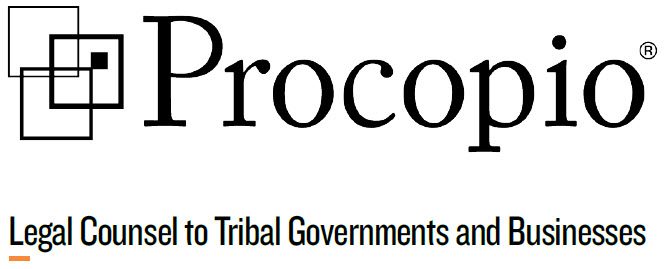
By: Shelley A. Carder| Senior Counsel | shelley.carder@procopio.com
Ted Griswold | Partner | ted.griswold@procopio.com
Earlier this month, the first-ever Tribal Behavioral Health Agenda (TBHA) was released. The TBHA is a ground-breaking formal statement recognizing the unique needs of tribal communities concerning behavioral health care and setting forth an agenda to improve the emotional, spiritual, and mental well-being of tribal members. The TBHA resulted from extensive consultation among tribal leaders, the Substance Abuse and Mental Health Services Administration (SAMHSA), Indian Health Service (IHS), and National Indian Health Board (NIHB).
The TBHA notes that the Native American population experiences a disproportionately high rate of mental health and substance abuse issues. Adult American Indians and Alaska Natives experienced higher rates of past year mental illness compared with the general population (21.2 percent versus 17.9 percent) and youth ages 12 and older had higher levels of illicit substance use than the general population (22.9 percent versus 17.8 percent) (SAMHSA). The study also addresses trauma, violence and crime, historical and current, which result from substance abuse.
The TBHA is intended to provide a unified front to battle behavioral health issues, to elevate priorities and strategies to address these challenges and to promote improved national awareness of the specific problems identified facing tribal communities. SAMHSA’s Principal Deputy Administrator Kana Enomoto said: “This new initiative represents an important step in our government-to-government relationship and gives American Indian and Alaska Native tribes a greater role in determining how to address their behavioral health needs with urgency and respect.”
The TBHA begins with the American Indian and Alaska Native Cultural Wisdom Declaration, which uses historical and cultural context to identify the issues and to set strategies and priorities for improvement. The agenda emphasizes the role that cultural wisdom and traditional practices must play in order to achieve improvements in mental health and substance abuse issues among the Indian population. Prevention, support and recovery issues must respect the need to develop unique ideas and models of health and healing interventions within tribal communities. The document recognizes that healing must focus on historical and intergenerational trauma and the need to develop a socio-cultural-ecological approach to addressing behavioral health issues.
The TBHA also acknowledges that the Native American population has traditionally been underserved and that collaborative efforts will be necessary among the tribes, and with state and federal agencies.
Stacy Bohlen, the Executive Director of the National Indian Health Board (NIHB) called the TBHA “.. . a valuable tool and resource to address the critical behavioral health needs we see across Indian Country.” The TBHA can be used as a helpful starting point for tribal communities to examine their own data to plan meaningful and effective responses to meet their own unique behavioral health needs.
The TBHA reflects a current nationwide behavioral health crisis that is not limited to the Native American community. SAMHSA reports that as of 2014 one-third of adults with a major depressive episode received no treatment in the previous year. The National Survey on Drug Use and Health from that same year reported that 21.2 million Americans ages 12 and older needed treatment for an illegal drug or alcohol use problem. Despite this need, there has been a 90% reduction in the number of available beds in state hospitals, with 20% eliminated in just the past five years. This results in a lack of placement and treatment options for persons with serious mental illness.
We agree with the TBHA that a successful strategy must simultaneously address the increase in behavioral health needs, as well as decreasing capacity to handle these needs. We look forward to working with Tribal governments to reverse both trends.
Procopio attorneys are experienced in representing and counseling Tribal governments, Tribal corporations, Inter-Tribal organizations and Tribal-affiliated clients in a wide range of legal matters. In addition, Procopio’s Health Care practice represents many groups comprising the healthcare industry and approaches the unique needs of Indian and Native American Health care with cultural sensitivity and appreciation for issues of sovereign immunity.
 Shelley is a member of the Native American Law and Health Care practice groups. She has more than 25 years’ experience in health care law that include litigation representing physicians, medical staffs and health care entities. Connect with Shelley at shelley.carder@procopio.com.
Shelley is a member of the Native American Law and Health Care practice groups. She has more than 25 years’ experience in health care law that include litigation representing physicians, medical staffs and health care entities. Connect with Shelley at shelley.carder@procopio.com.
 Ted is head of the Native American Law practice group and primary editor for the Blogging Circle. Connect with Ted at ted.griswold@procopio.com and 619.515.3277.
Ted is head of the Native American Law practice group and primary editor for the Blogging Circle. Connect with Ted at ted.griswold@procopio.com and 619.515.3277.

 Ted is head of the Native American Law practice group and primary editor for the Blogging Circle. Connect with Ted at ted.griswold@procopio.com and 619.515.3277.
Ted is head of the Native American Law practice group and primary editor for the Blogging Circle. Connect with Ted at ted.griswold@procopio.com and 619.515.3277.




